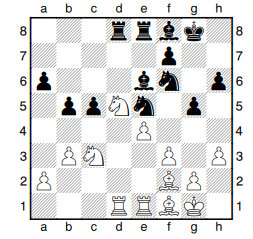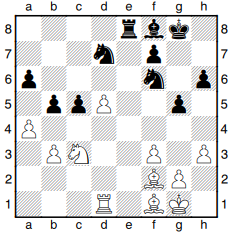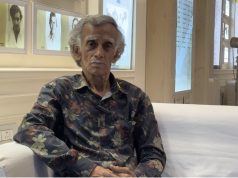In our series World Champion Born On This Date, we will learn about Vladimir Kramnik- the Champion who made a ELO rating performance of 2958 points at the tender age of 16.
Vladimir Kramnik was born on 25th June, 1975, to Irina Fedorovna and Boris Sokolov-Kramnik at Tuapse in Russia. As a child, Kramnik studied in the Chess school established by Mikhail Botvinnik and gradually became a strong player.
He was selected to the Russian Team for Manila Chess Olympiad in 1992. But that created a controversy in his country because he was only a FIDE Master then. But as his selection was strongly recommended by Gary Kasparov, he was ultimately included in the team.
Vladimir Kramnik proved the critics completely wrong by winning the Individual Gold Medal on the First Reserve (5th) Board.
In 1995, Kramnik served as a second (assistant) for Kasparov in the World Chess Championship match of FIDE’s break-away faction. Kasparov’s challenger was Vishwanathan Anand. This gave Kramnik an opportunity to develop insights and intricacies of Chess.
In January 1996, Vladimir Kramnik became the world number one rated player with ELO 2775, jointly with Garry Kasparov.
It was in 2000, Kramnik defeated Kasparov to become the Classical World Chess Champion in the Break-away Group of FIDE. He went on to defend his title in 2004 against Peter Leko.
In 2006, Kramnik defeated the reigning FIDE World Champion Veselin Topalov in a unification match. As a result, Kramnik became the first undisputed World Champion since Kasparov split from FIDE in 1993.
However, he lost the title to Vishwanathan Anand the following year. But he did not take this well as he opined that winning the title through a tournament was different than winning in a match. He, therefore, challenged Anand at the World Chess Championship 2008 at Bonn in Germany. But in the 12 game match, Anand won easily with a score of 6.5-4.5, without needing to play the last game.
Kramnik remained in the Chess circuit after that but without much achievements. He retired from professional Chess in 2019.
Analysis of one of the matches of Vladimir Kramnik
Today, we shall see a victory by Kramnik which he played with his typical strategic style, technique and accurate endgame play. It is not easy to find out where Black went wrong first time in the game.
Vladimir Kramnik,V (2743) – Veselin Topalov (2813) WCh Playoffs Elista RUS (2), 13.10.2006.
1.d4 d5 2.c4 c6 3.Nf3 Nf6 4.Nc3 e6 5.e3 Nbd7 6.Qc2 Bd6 7.b3
This idea of Kramnik has a lot of dynamic potential and has become extremely popular nowadays. White solves the problem of QB first and also keeps an option of strengthening the centre with bxc4 if Black captures ….dxc4.
7…0–0 8.Be2 b6 9.0–0 Bb7 10.Bb2 Re8 11.Rad1 Qe7 12.Rfe1 Rac8 13.Bd3 13.e4! looks better but Kramnik always tried to avoid tactical complications.
13…e5?!
This natural looking move is difficult to criticise but the other break …c6–c5 was more accurate.13…c5! with an unclear position.
14.e4!
Now that the Re1 has been activated, this break suggests itself. Of course, it is forced as well, since White can’t allow …e5–e4.
14…dxc4
Black must keep the ‘e’ file closed to prevent the BQ being directly exposed to R on ‘e1’.
15.Bxc4 b5 16.Bf1 g6?!
16…exd4 17.Nxd4 Be5 18.Nf5 Qc5! seems better.
17.Qd2?!
17.Ne2! opening the QB in style of Alekhine was much stronger. For example, 17…exd4 18.Nexd4 a6?? 19.e5! Bxe5
(19…Nxe5 20.Nxe5 Bxe5 21.Nf3)
20.Nxe5 Nxe5 21.f4 etc.
17…Rcd8! 18.Qg5?! a6?
18…Bc7!= It is important to move the Bishop for two reasons, (1) to avoid a Pawn Fork e4–e5 (2) to clear the ‘d’ file.
19.h3?
The Bb2 MUST be activated immediately if White wants to try for initiative.19.Nb1! was a more logical follow up of 18.Qg5. Black is unable to capture 19…exd4?? due to 20.e5! Nxe5 21.Nxe5 Bxe5 22.f4
19…exd4 20.Nxd4 Qe5!
Black has equalised but this may not be enough against a true student of Botvinnik School of Chess!
21.Qxe5 Nxe5 22.Nc2 g5?! 23.Bc1! h6 24.Be3 c5 25.f3 Bf8 26.Bf2 Bc8?!
It was better to play for activity to his own forces — rather than trying to create a defensive setup — with the active 26…Nh5! 27.Ne3 Nf4 etc.
27.Ne3 Be6 28.Ned5
Veselin Topalov

Vladimir Kramnik
28…Bxd5?
A strategic error. Black fails to understand the latent strength of the WKB, which is all set for a Pawn break a2–a4!. Capturing on ‘d5’ with Nf6 was the right way to maintain equilibrium.28…Nxd5 29.exd5 Bf5 30.a4 bxa4 31.bxa4 c4 was better.
29.exd5Ned730.Rxe8! Rxe8 31.a4!
Veselin Topalov

Vladimir Kramnik
31…b4??
An elementary strategic blunder deserves severe criticism. Black goes down without a fight.31…c4 was forced though White maintains slight advantage with 32.bxc4 bxc4 33.d6!
32.Ne4 Nxe4
32…a5 fails to 33.Bb5! Rd8 34.Bg3.
After 32…Ra8 33.Nxf6+ Nxf6 34.d6 Nd7 35.Bc4, Black is totally tied down.
33.fxe4+– Nf6 34.d6! Nxe4 35.d7 Rd8 36.Bxa6
The Passed ‘a’ Pawn is now the decisive factor.
36…f5 37.a5 Bg7
Black wants to win the ‘d7’ Pawn by closing the ‘d’ file with …Nxf2 followed by ….Bd4 check but this plan fails to a simple tactical sequence.
38.Bc4+ Kf8 39.a6! Nxf2 40.Kxf2 Bd4+ 41.Rxd4! cxd4 42.a7 Ke7 43.Bd5 Kxd7 44.a8Q Rxa8 45.Bxa8Black resigned.1–0




